[javascript protected email address]
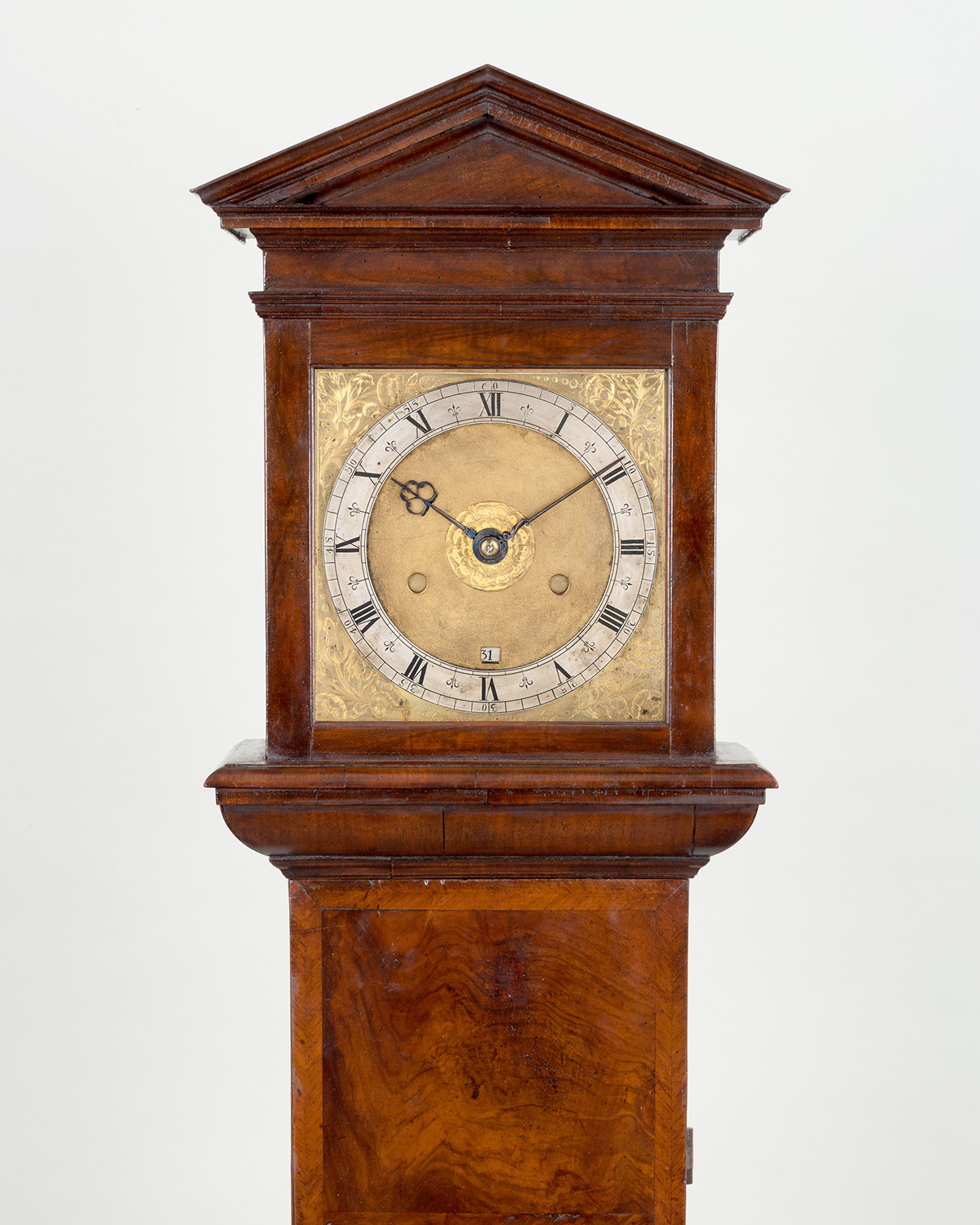
Joseph Knibb, Oxford

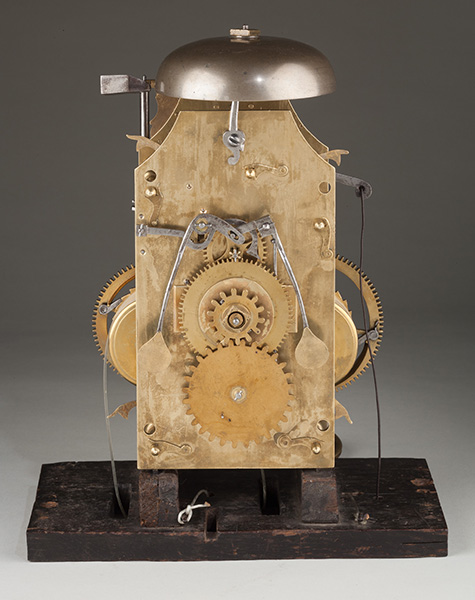
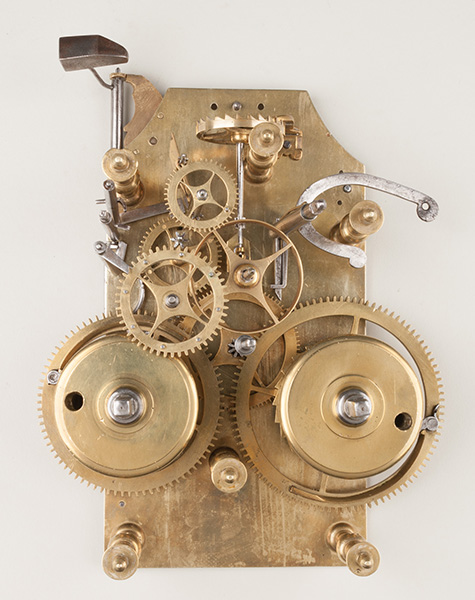
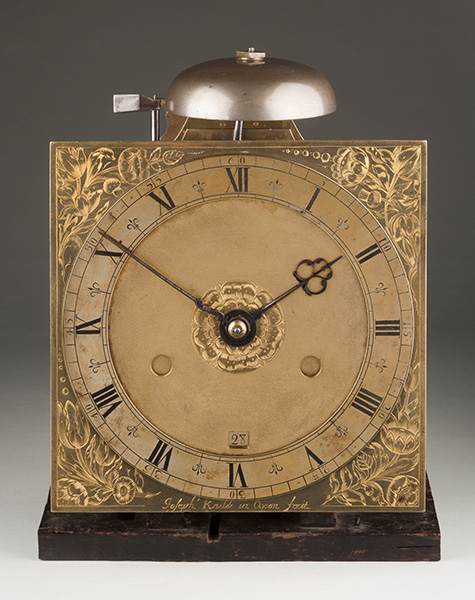
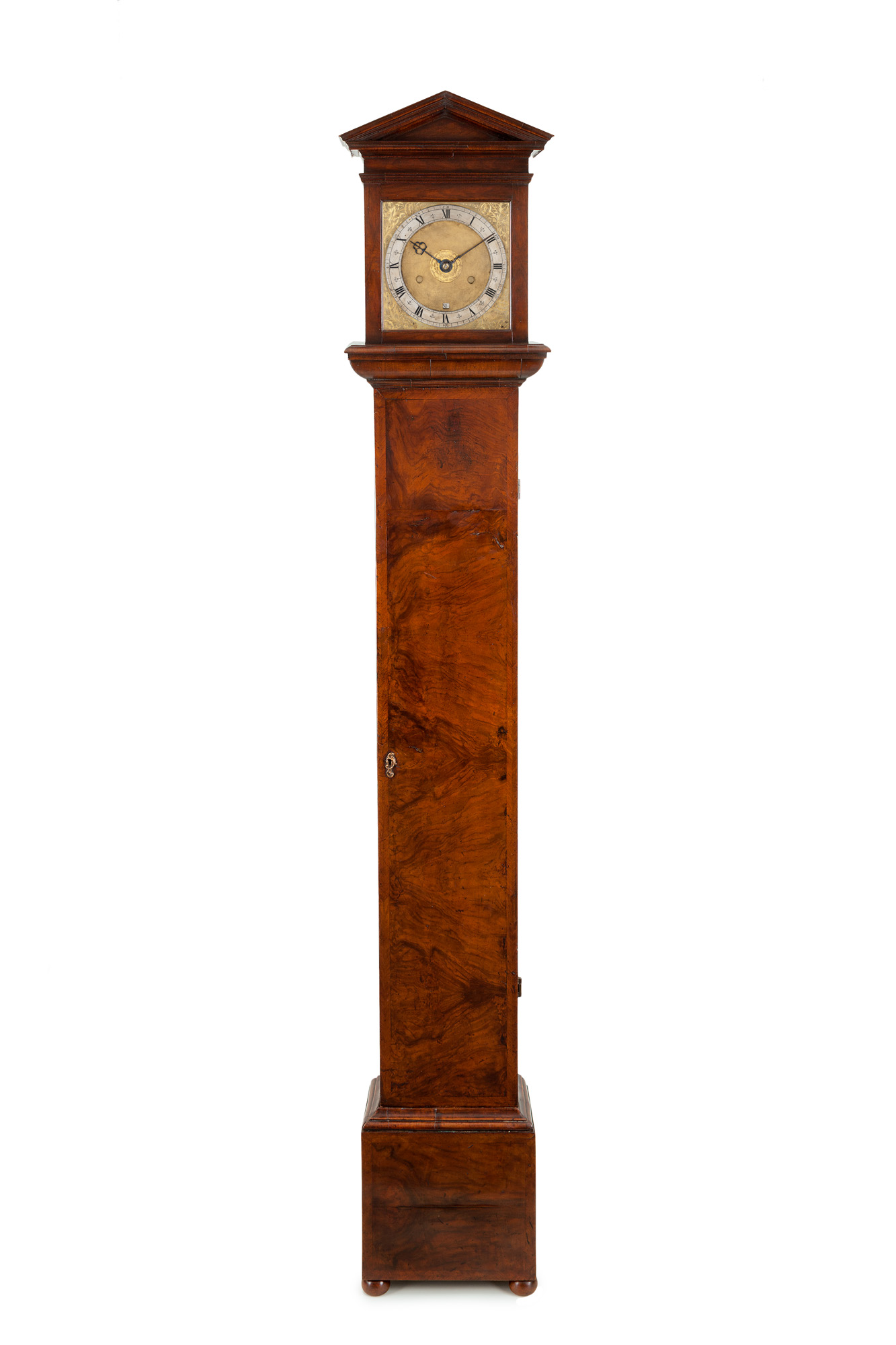
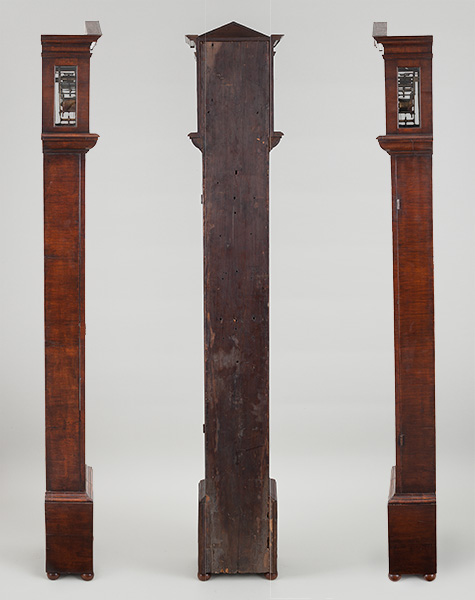
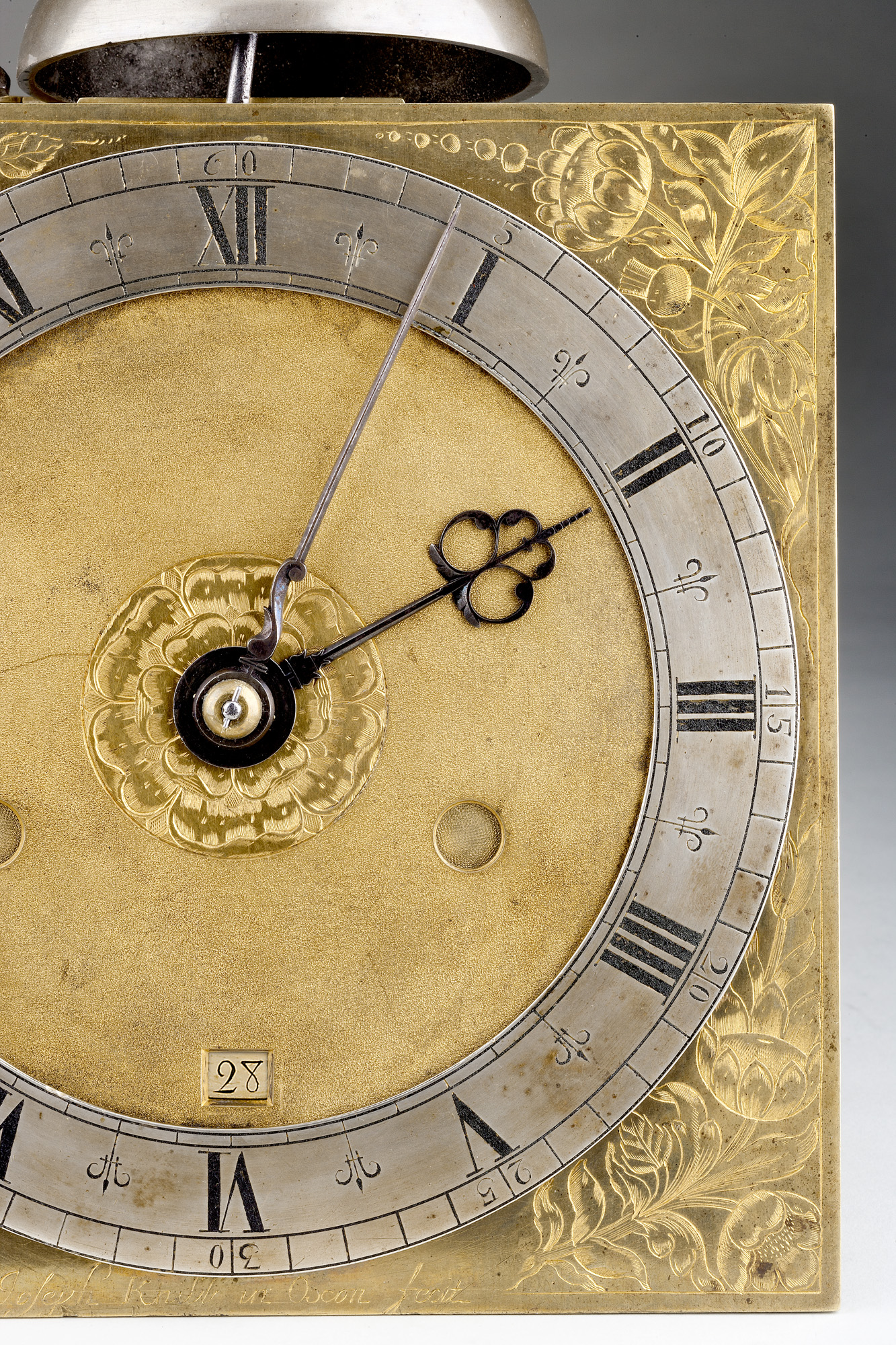
Circa 1666
Sold
An exceptionally rare 8-day walnut longcase clock. CASE The well-proportioned plinth is raised on four replacement walnut bun feet and the backboard extends nearly the entire length of the case. The unusual trunk door closes ‘flat-to-the-front'''' and retains the original iron hinges. The rising hood has been very faithfully restored and returned to the original architectural pediment using part of the original carcass, the sides are glazed and it has a cotton-covered aperture in the top to allow the sound of the bell to be heard. DIAL The 81â„2 inch square fully latched dial is signed Joseph Knibb in Oxon fecit at the base interrupting the scored line border. The narrow silvered brass chapter ring is engraved with Roman hour chapters with fleur de lys half hour markers and an outer Arabic minute sector. The lightly matted centre is finely engraved with a central rosette; the winding holes are shuttered and there is a calendar aperture above chapter VI. The blued steel hands are beautifully pierced and sculpted and the spandrels are exquisitely engraved with tulips and daisies amongst foliage. MOVEMENT The movement has typically early long shouldered plates joined by six slender ringed baluster pillars, which are all latched at the front plate. The going train retains the original verge escapement, replete with crown wheel, potance, pendulum, backcock and bob; the train is entirely original, right down to the great wheel. The bolt-and-shutter maintaining power is also original, including the original matting and gilding on the ‘paddles''''. The strike train retains almost complete originality, the hammer is mounted vertically on the backplate in the early manner pivoted at the top on a shaped brass cock with the hammer striking on the outside of the original bell which is mounted above the plates; the strike is regulated by the original countwheel which is secured to the backplate towards the upper right quadrant. Unique attributes 1. The earliest recorded walnut veneered longcase clock 2. The earliest known longcase clock with an entirely original escapement PROVENANCE F.H. Green This clock was originally bought in 1931 by the dealer/collector F.H. Green, apparently from a residence in Oxford. The clock was given a page in The Antique Collector published in December 1931 describing it as a rare and instructive example of great beauty. Mallets The clock was then bought from F.H. Green by Mallets and sold to an American collector where it remained for some 80+ years.
